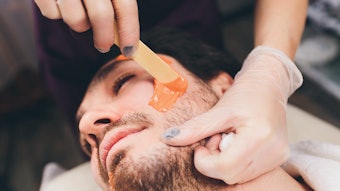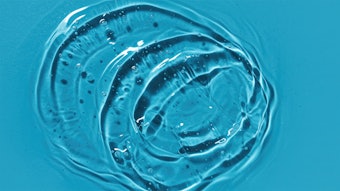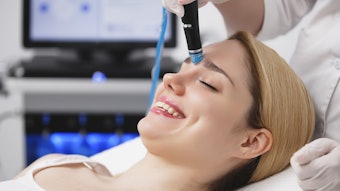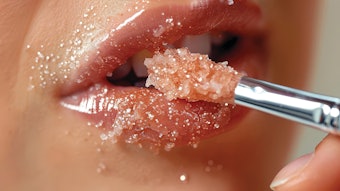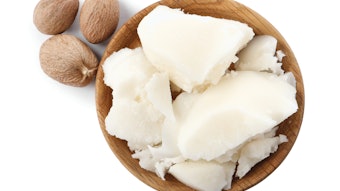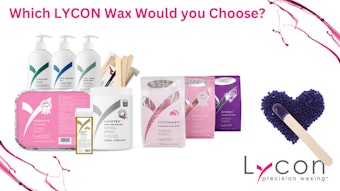
Cellulite is a common concern for clients, as it is estimated to affect at least 85% of women. It is most commonly seen as a dimpled or lumpy appearance on the thighs and buttocks, although other areas including the stomach, hips, and even arms can also be effected.
Cellulite is normal fat that is surrounded by dense, fibrous tissue that creates the dimpling effect. There are several contributors to cellulite, including increased estrogen levels, diets full of toxins, poor circulation, smoking and simply genetics.
Clients often ask what they can do when exercise and diet don’t reduce these protruding fat deposits. There are five commonly used methods to reduce the appearance of cellulite.
1. Devices
There are devices that use either one or several of the following modalities to reduce problematic areas of cellulite. In essence, they all work to break down fat so the body can eliminate it through its natural detoxification process.
Endermologie is one such device that was FDA approved in 1998 for the temporary reduction of the appearance of cellulite. It combines suction to pull up the skin while rollers massage to break up the excess fat, which is then absorbed by the body and discarded.
Devices using heat are the most popular method to reduce cellulite. The heat breaks down the fat cells, as well as contracts tissue below the skin’s surface promoting skin tightening. Modalities that utilize heat include radio frequency, ultrasound, infrared light, and lasers. Many devices use more than one method of heating to obtain optimal results, some also include suction and/or massage.
Cryolipolysis, on the other hand, reduces cellulite by freezing fat cells. Since fat cells are more sensitive to cooling than skin cells, these treatments damage the fat cells while leaving the skin intact. The fat cells eventually die and the inflammation triggered allows the body to carry away the damaged cells through the lymphatic system.
2. Minimally Invasive or Injection/Subcision
Cellfina is the first and longest lasting FDA-approved cellulite reduction procedure for the buttocks and thighs. Cellfina works by releasing the fibrous bands under the skin known as “septae” that pull down skin and create that dimple effect.
The procedure works by subcision: A physician typically injects an anesthetic under the skin to numb the area, and then a suction cup is attached to the dimpled skin to stabilize it. The doctor then cuts the fibrous bands of connective tissue. Only one treatment is typically needed and it is clinically proven to last up to three years.
Sculptra is an FDA-approved injectable filler for facial volume loss that fills depressed areas and helps gradually replace lost collagen. It has recently started being used “off-label” (meaning it is not FDA-approved for use in other areas) to fill in the divots associated with cellulite, allowing for a smoother appearance. Two to three treatments with Sculptra is often needed, but results typically last at least two years. Most physicians use this in combination with subcision.
Mesotherapy, also called Lipodissolve, is a fat-removal process that was invented in 1952 by Dr. Michel Pistor. Mesotherapy is a series of injections delivered into the mesoderm (the area between the dermis and subcutaneous layers of skin) to dissolve fat, including cellulite. The injections contain combinations of medications, botanicals, vitamins and/or minerals to treat fat deposits.
The most commonly used ingredients in mesotherapy include phosphatidylcholine, deoxycholate, aminophylline, L-carnitine and hyaluronidase, along with other extracts, vitamins and/ or minerals. Once the medication or cocktail is delivered into the area, the fat cell walls are broken down and turned into liquid that can be easily removed by the body.
3. Topicals
Topical products and tools assist in the reduction of cellulite, but realistic expectations must be given. It is necessary to exaggerate the importance of consistency.
Vitamins A and C are two of the most commonly used ingredients in skin care, as well as in cellulite creams due to their antioxidant properties and their ability to support collagen synthesis. Antioxidants fight off harmful free radicals that can break down collagen. This, along with the rebuilding of collagen, allows for optimal skin tightening.
Caffeine is likely the most commonly used ingredient in topical cellulite products. It dehydrates the area for a temporarily smooth appearance but also plays a role in cellulite reduction by enhancing fat metabolism.
The main purpose of these topicals is to increase circulation, fight free radicals, enhance collagen production and break down fat deposits.
The ingredient aminophylline is used in prescription inhalant drugs for asthma, and has recently been incorporated into topical products for cellulite. It has been said to break down fat deposits, however, clinical studies are currently lacking.
Centella Asiatica or Gota Kula has been shown to increase blood flow and improve the body’s absorption rate of nutrients. It is used in topical products, supplements and also can be injected with mesotherapy.
Horse Chestnut, derived from a plant, contains the ingredient aescin, which tones the capillaries beneath the skin and balances circulation.
Bladderwrack is one of the most common seaweeds found in the ocean. This seaweed has been used for centuries aiding in several health benefits like improving thyroid function, protecting the skin and reducing inflammation. Bladderwrack also increases metabolism helping people lose weight and fight cellulite.
These are just a few; there are several other ingredients used. The main purpose of these topicals is to increase circulation, fight free radicals, enhance collagen production and break down fat deposits.
Dry Brushing is another topical method to reduce cellulite and eliminate the build-up of toxins, however, it must be done correctly. Brushing movements should be circular and always in the direction of lymphatic flow, as our lymphatic system is responsible for removing contaminants in the body. The use of a plastic, silicone or wooden hand-held massager with protruding fingers are also commonly used to breakdown the cellulite trapped in the between the layers of skin. Either of these methods should be used in the troubled area for at least 10 minutes daily for best results.
4. Lifestyle
Cellulite is usually the last bit of fat the body releases since it is surrounded by stubborn fibrous tissue. Therefore, even with treatment, a consistently healthy lifestyle is a must to prevent cellulite from occurring or recurring.
A balanced diet is the first step to gaining a healthy lifestyle. A low-fat and high-fiber diet including plenty of fruits and vegetables is key to eliminating excess fat. Avoiding excess sugars, fats,and carbohydrates, which can easily be stored as fat is also necessary. Additionally, lecithin-rich foods like soy, eggs, and spinach help strengthen cell walls, improving the appearance of cellulite.
Smoking is a prime example of a product that increase toxins and causes asphyxiation, which in turn slows down proper circulation leading to more pronounced cellulite.
Drinking plenty of water will help keep the body in a healthy state and promotes natural elimination of toxins from the body. Eight 8-oz. glasses each day is the standard recommendation.
Consistent exercise is another way of maintaining a healthy lifestyle and preventing and/or reducing cellulite. It is most often recommended to workout at least three to four times a week, including both cardio and strength training for cellulite reduction. At the very least, walking 30 minutes, five days a week will improve circulation and fight the build-up of fat.
Another part of maintaining a healthy lifestyle is to eliminate avoidable toxins. Smoking is a prime example of a product that increase toxins and causes asphyxiation, which in turn slows down proper circulation leading to more pronounced cellulite.
5. Detoxification
Your skin is your largest organ, so it makes sense that it would show positive results from a solid detox program. Toxins can build up in the body acting as free radicals, which ultimately lead to aging skin and disease.
Detoxing, recommended two to four times a year, can allow organs to function the way they should while giving the immune system a boost to decrease free radicals that create cell damage. Detoxes also support the body to absorb nutrients more effectively including essential vitamins from food and supplements. Allowing the body to function normally can help to reduce cellulite by stimulating the body to rid itself of excess waste, including fat.
There are several different methods of detoxing including sweating, dieting, and wraps. Sweating can easily be done on a treadmill, in a sauna, steam room or simple body wraps. It is important to note that results from treatments that simply create sweating are due to water-loss, and are temporary. Wraps containing seaweed, mud, or clay mixed with botanicals that stimulate circulation may be more beneficial and longer lasting if done on a consistent basis along with a proper diet and exercise program.
There are also several detox programs that include fasting, or cutting specific foods from one’s diet. Care must be taken when lowering calorie intake or fasting as the body could become weak and some people can get sick. It is recommended that anyone starting a detox program check with their physician first. To increase results, some programs recommend supplements that aid in water loss, stimulate circulation and have fat-burning properties. A few of these supplements are L-carnitine, xanthines from green tea, enzymes including bromelain, and several herbs like gingko biloba, centella asiatica and alfalfa.
Some cellulite treatment options are temporary and others are longer lasting. Like all esthetic treatments, results vary per person. One client may see great results from a detox and topical products, while another may need to go to a physician for a medical procedure. Regardless, many are looking for ways to reduce the unsightly appearance of cellulite. It is important to know the treatments available to provide each client with the best option to suit their needs.

